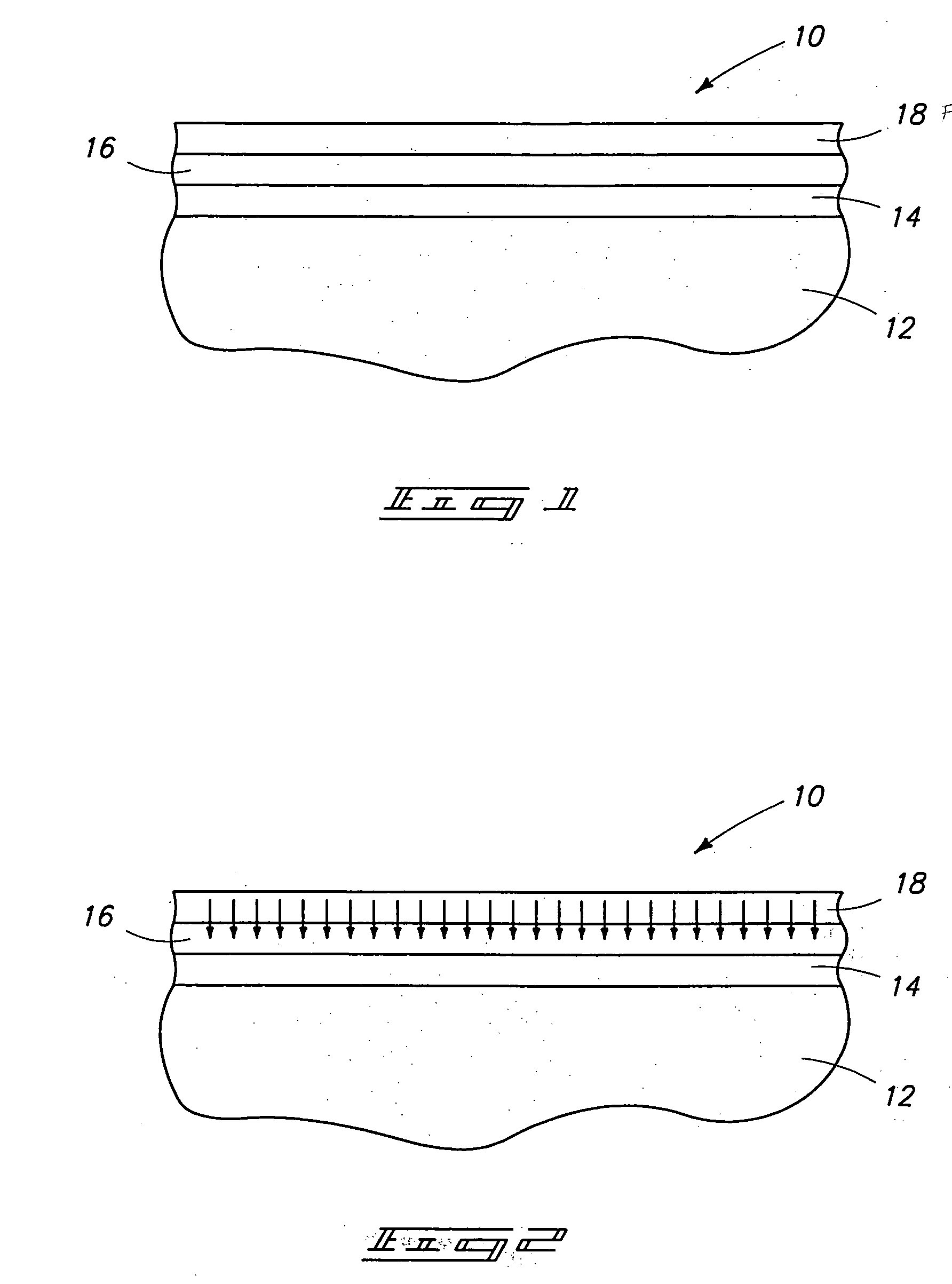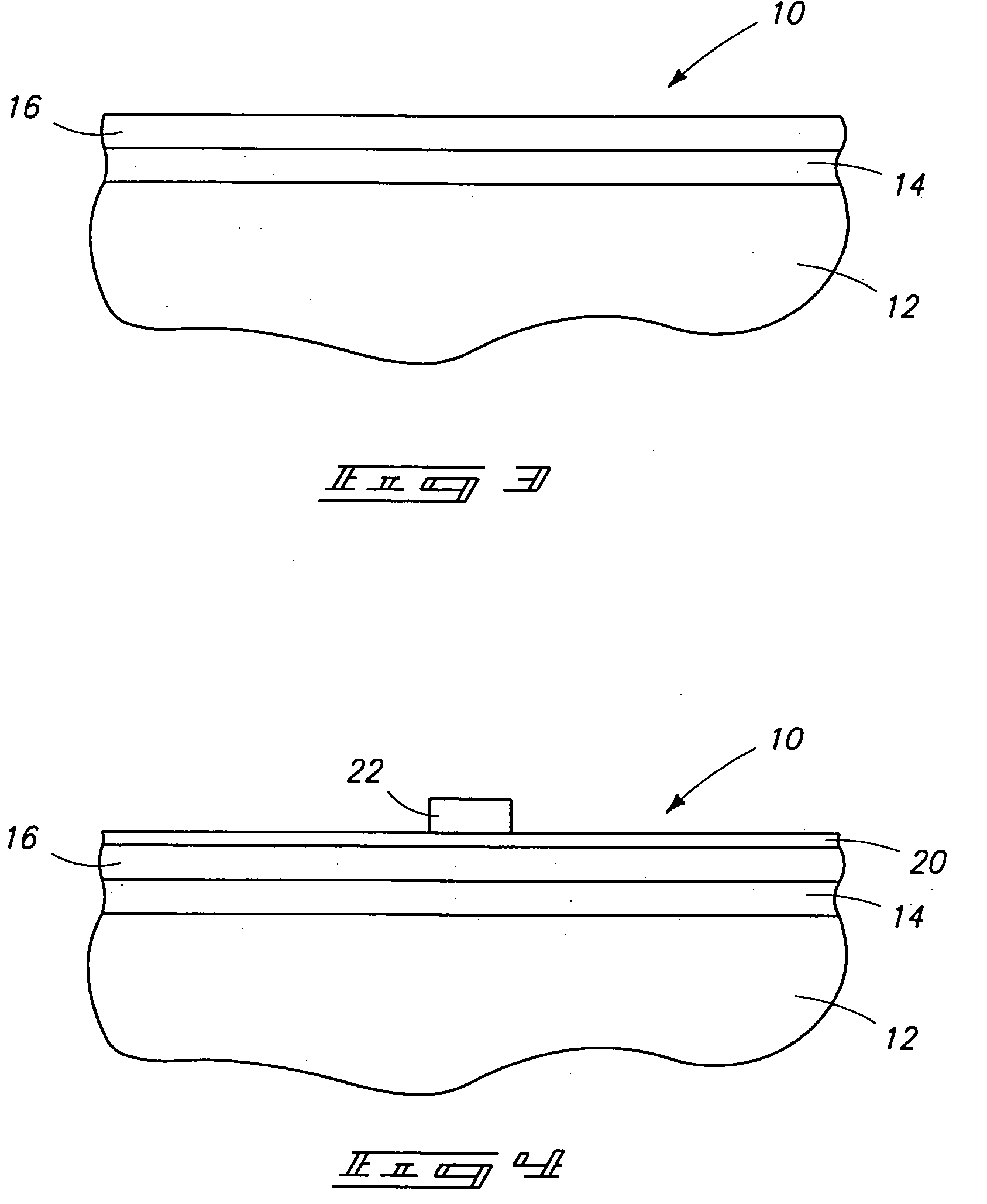Thin film transistors and semiconductor constructions
a technology of thin film transistors and semiconductor constructions, applied in the direction of transistors, semiconductor devices, electrical equipment, etc., can solve the problems of high concentration of broken or “dangling” si bonds, loss of data, and rise to potential barriers at grain boundaries
- Summary
- Abstract
- Description
- Claims
- Application Information
AI Technical Summary
Benefits of technology
Problems solved by technology
Method used
Image
Examples
Embodiment Construction
[0023] This disclosure of the invention is submitted in furtherance of the constitutional purposes of the U.S. Patent Laws “to promote the progress of science and useful arts” (Article 1, Section 8).
[0024] In accordance with one aspect of the invention, a method of forming a thin film transistor relative to a substrate comprises the following steps: [0025] providing a thin film transistor layer of polycrystalline material on a substrate, the polycrystalline material comprising grain boundaries; [0026] providing a fluorine containing layer adjacent the polycrystalline thin film layer; [0027] annealing the fluorine containing layer at a temperature and for a time period which in combination are effective to drive fluorine from the fluorine containing layer into the polycrystalline thin film layer and incorporate fluorine within the grain boundaries to passivate said grain boundaries; and [0028] providing a transistor gate operatively adjacent the thin film transistor layer.
[0029] In...
PUM
| Property | Measurement | Unit |
|---|---|---|
| pressure | aaaaa | aaaaa |
| temperatures | aaaaa | aaaaa |
| temperatures | aaaaa | aaaaa |
Abstract
Description
Claims
Application Information
 Login to View More
Login to View More - R&D
- Intellectual Property
- Life Sciences
- Materials
- Tech Scout
- Unparalleled Data Quality
- Higher Quality Content
- 60% Fewer Hallucinations
Browse by: Latest US Patents, China's latest patents, Technical Efficacy Thesaurus, Application Domain, Technology Topic, Popular Technical Reports.
© 2025 PatSnap. All rights reserved.Legal|Privacy policy|Modern Slavery Act Transparency Statement|Sitemap|About US| Contact US: help@patsnap.com



